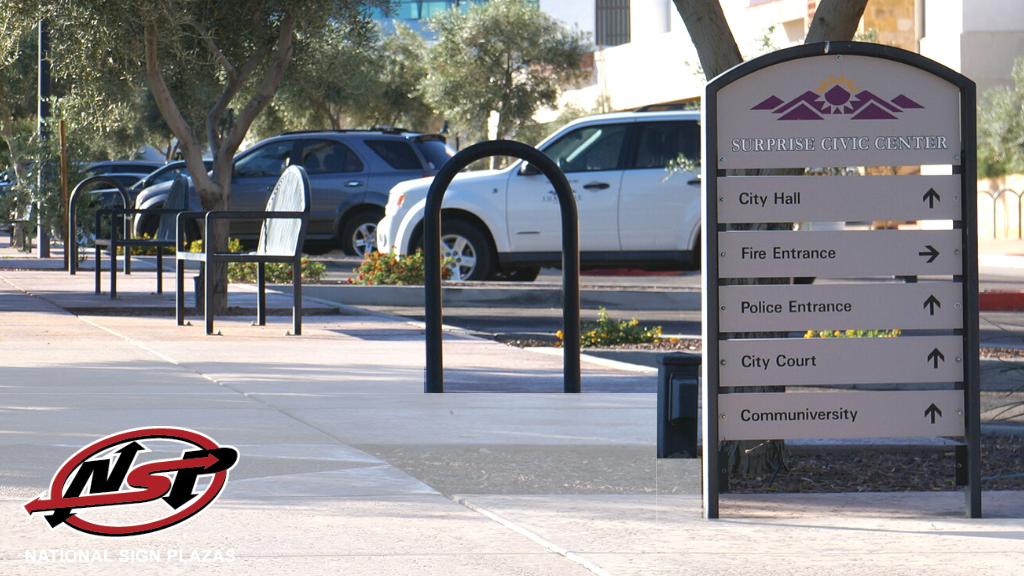Pedestrian Signs: 4 Ways to Support Walkability in Your City

Although planes, trains, and automobiles are America’s most popular transportation modes, there are a growing number of people traveling by foot. Do your pedestrian signs support these citizens?
From the popularity of wearable fitness technology to the promotion of civic walking programs to increased interest in car-less lifestyles, cities must consider how they are supporting walkability and multimodal transportation through their pedestrian signage systems.
Here are four tips for implementing pedestrian signage in your city.
1. Integrate Pedestrian Signs with Handheld Maps.
Pedestrian sign systems should consist of a coordinated family of wayfinding solutions including head-up map-based signs, directional pointers, and complementary handheld maps. The maps can either be traditional paper maps or GPS-enabled mobile applications.
Studies conducted by both Building Legible Cities and MORI suggest that pedestrians feel most comfortable when static pedestrian signs are supported by handheld maps.
2. Connect Pedestrian Signs with the Mobile Experience.
Speaking of mobile applications, smartphones provide a targeted way for cities to engage their audience. Wi-fi and BLE (bluetooth low energy) enabled beacons allow your city to provide time- and location-relevant information to a multitude of users at the same time.
Further, these technologies allow cities to extract useful data about how pedestrians use the public space. Once aggregated, the data can create powerful connections to planning and economic agendas.
3. Keep Pedestrians on Their Feet.
The primary goal of pedestrian signs is to increase walkability within a specific environment. A system is most beneficial and effective if it enhances the walking experience.
Pedestrian signage systems should help walkers assess distance, ease of access, alternate routes, and information about their final destination. Branded touchscreen kiosks that link to mobile applications extend the effectiveness of these efforts.
4. Remember Citizens with Special Needs.
Your pedestrian signage system must take into consideration every potential user, including the vision- and hearing-impaired and others who benefit from ADA requirements.
These features can be particularly useful in heavily-trafficked public facilities, businesses districts, and public transportation hubs. The more people capable of utilizing the system, the more effective it becomes.
Pedestrian Signs: A Key Component of Your Wayfinding System.
Walkability is a key concern of modern wayfinding systems. Implemented correctly, pedestrian signs reinforce civic branding, increase daily spending, and accelerate economic growth.